12 Easy-to-Propagate Plants Perfect for Growing in Water
Looking for an easy and fun way to expand your plant collection? Propagating plants in water vases is a low-maintenance method that allows you to watch your greenery grow and thrive. Whether you’re a beginner or an experienced gardener, these plants can quickly root and flourish in just a simple vase of water. Plus, they make beautiful and refreshing additions to any space. Let’s dive into the best plants that can grow effortlessly in water.
This post may contain affiliate links, which helps keep this content free. Please read our disclosure for more info.
Pothos (Epipremnum aureum)
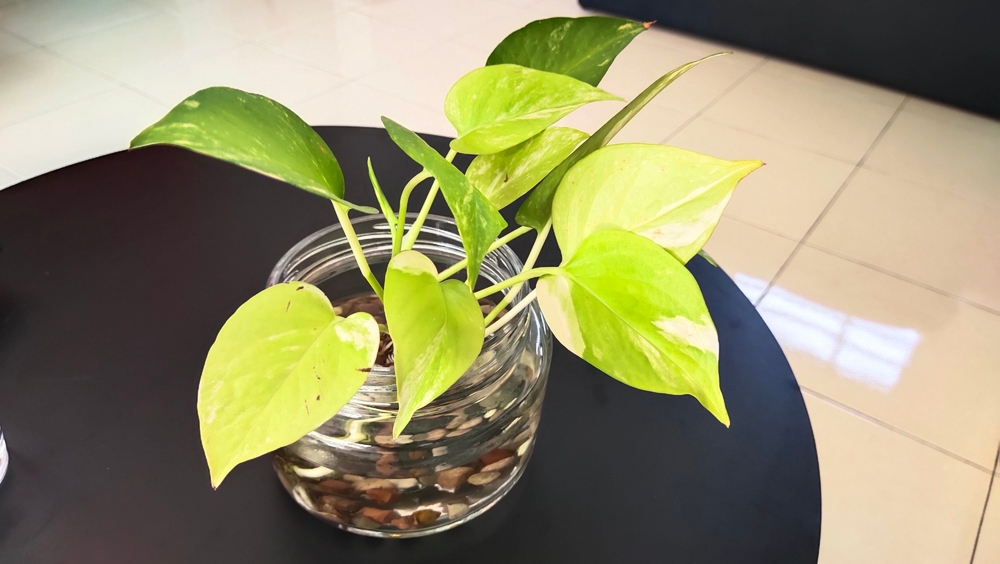
Pothos is one of the most well-loved houseplants for propagation in water. It’s not only visually appealing with its trailing vines and heart-shaped leaves, but it’s also incredibly easy to grow. To propagate, cut a stem just below a node (the small bump where roots grow), and place it in a water-filled vase. Over time, roots will form and the plant will begin to grow quickly, allowing you to expand your plant collection effortlessly.
The beauty of pothos lies in its adaptability. It can grow in various light conditions, from low to bright indirect light. Plus, pothos can thrive for long periods in water alone, making it a perfect low-maintenance plant. Whether you place it on a shelf, in a hanging vase, or on a desk, pothos adds a touch of lush greenery to any space.
Spider Plant (Chlorophytum comosum)
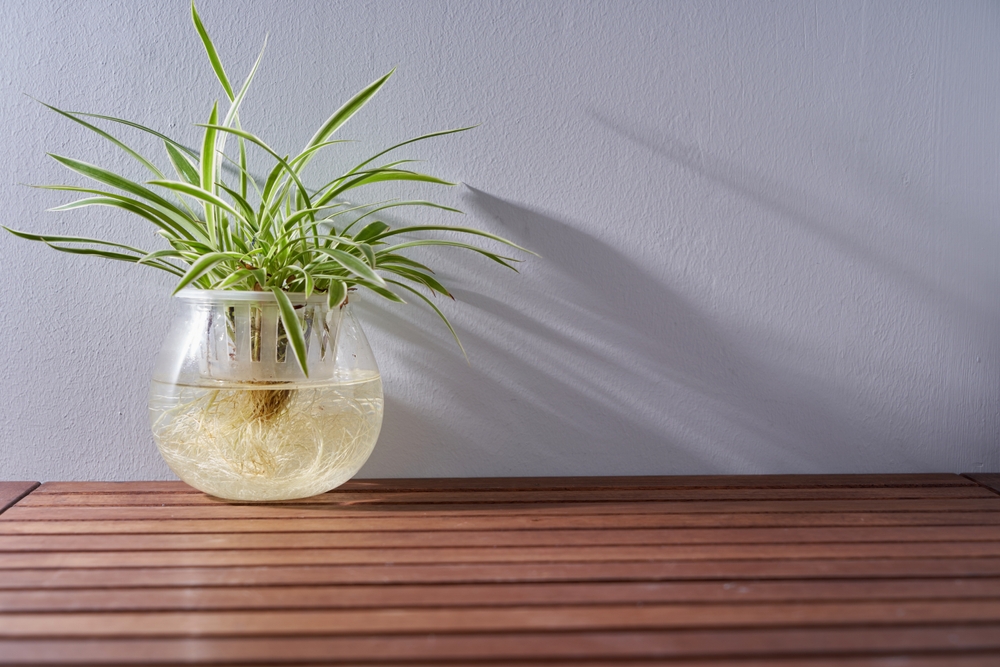
Spider plants are incredibly easy to propagate in water, thanks to their baby “pups” that grow along long, arching stems. These pups can be separated from the mother plant and placed in water to root. Simply submerge the base of the pup in a vase of water, and within a few weeks, you will see roots beginning to develop. Spider plants are known for their resilience, so they do well in a water vase and require minimal attention.
In addition to being easy to propagate, spider plants are also great for improving indoor air quality. They adapt well to various conditions, including indirect light and regular water changes. Plus, spider plants can grow quite quickly, allowing you to watch them thrive as they develop into new plants over time.
Sweet Potato Vine (Ipomoea batatas)
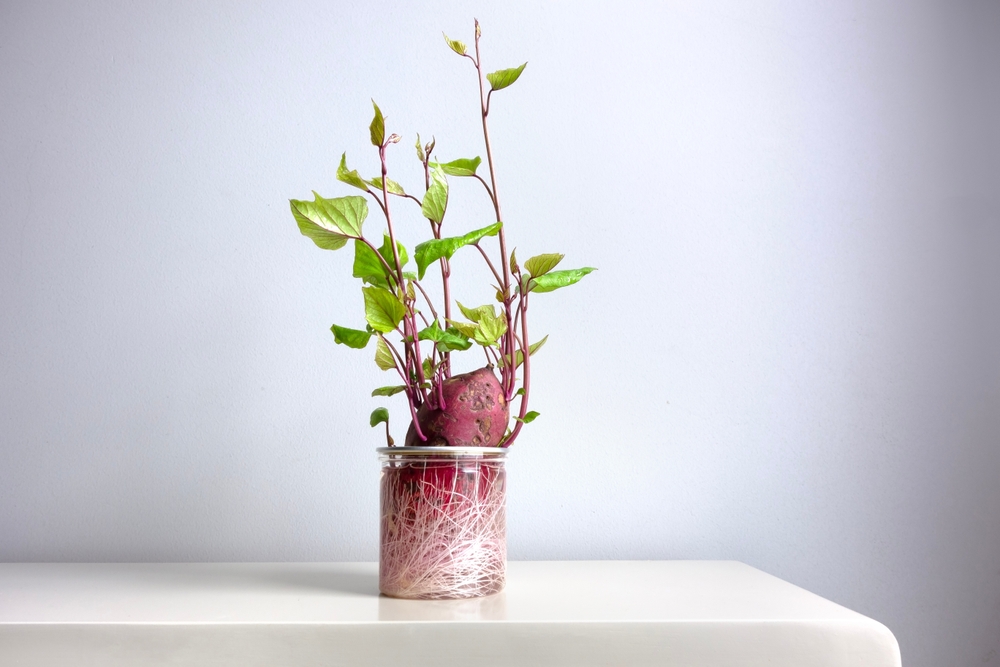
Sweet potato vines are an exciting and unique choice for water propagation. Unlike traditional houseplants, sweet potato vines are often grown for their vibrant foliage, which comes in shades of purple, green, and even variegated patterns. You can either start from a store-bought sweet potato or cuttings from the vine. Place them in a water vase, and watch the roots form in a matter of weeks.
As they grow, sweet potato vines will spread and cascade over the edge of your vase, adding a stunning touch of color to any room. This plant thrives in warm, sunny environments and benefits from regular water changes to maintain healthy roots. The fast growth and bright foliage make it a popular choice for those wanting to add a little extra flair to their indoor plant collection.
Philodendron (Philodendron spp.)
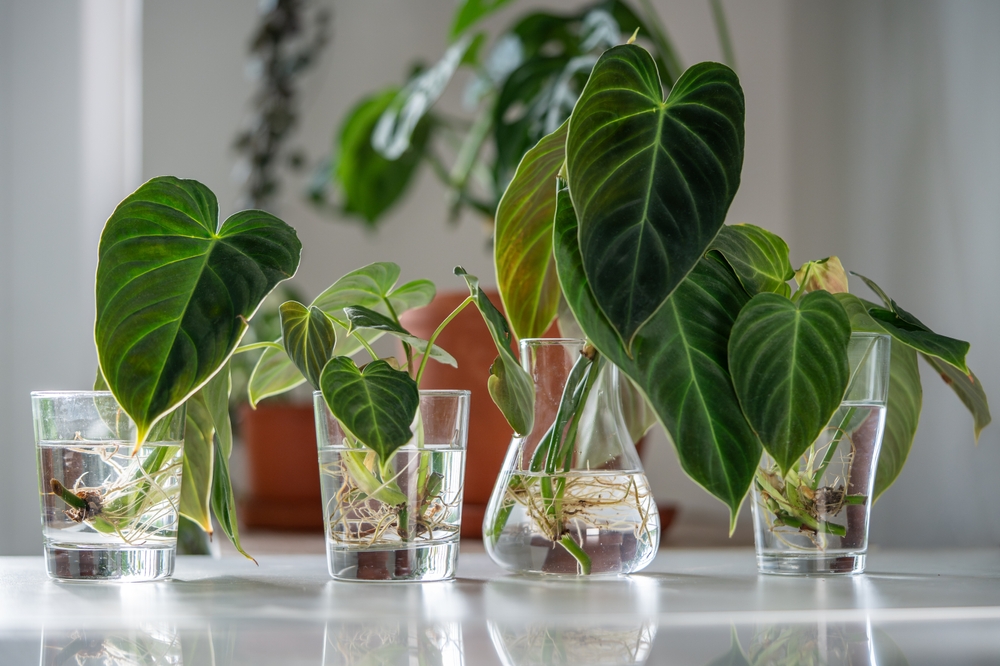
Philodendrons are renowned for their ease of care and stunning foliage, making them an ideal plant to propagate in water. By cutting a stem just below a node and placing it in a water vase, the roots will begin to form, and new growth will follow. Philodendrons are particularly forgiving when it comes to water propagation, growing quickly and consistently in water with minimal maintenance.
The plant’s heart-shaped leaves and trailing vines add an elegant touch to any space. Philodendrons can thrive in a variety of lighting conditions, from low to bright indirect light. They also do well in water-only setups for extended periods, making them an excellent option for those looking to propagate new plants with ease.
ZZ Plant (Zamioculcas zamiifolia)
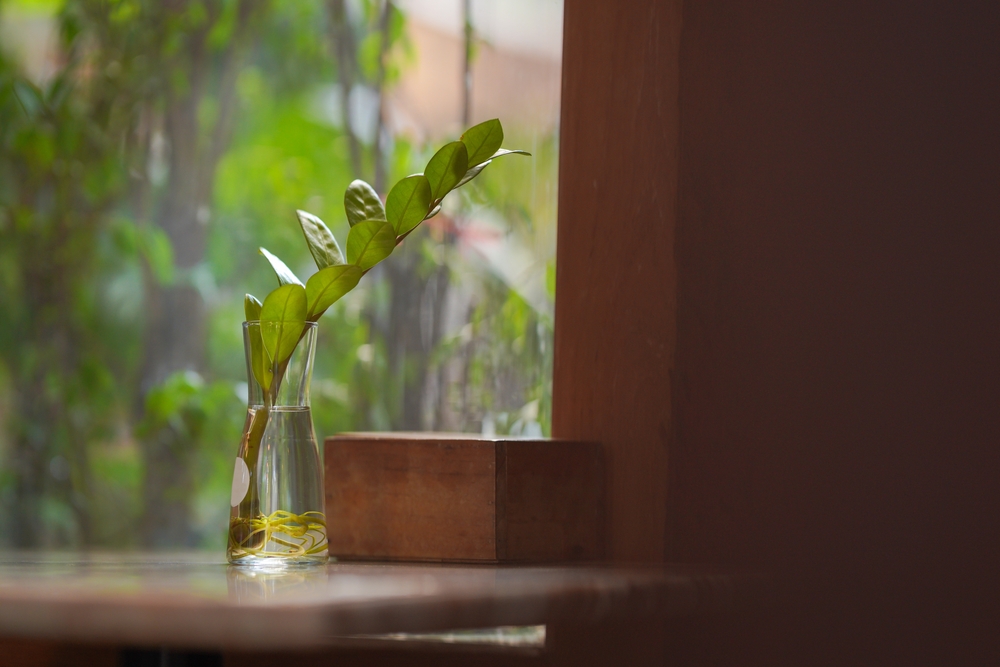
The ZZ plant is a resilient and low-maintenance plant that can easily be propagated in water. Cut a healthy leaf with a small section of the stem and place it in water. The ZZ plant roots slowly but steadily in water, and once it’s established, you will have a thriving new plant. Its waxy, dark green leaves make it a striking addition to any room.
ZZ plants thrive in indirect light and need minimal attention, making them perfect for beginners. They are tolerant of low-light conditions and dry spells, making them very forgiving if you occasionally forget to water them. Regular water changes will keep the plant happy as it grows.
Coleus (Plectranthus scutellarioides)
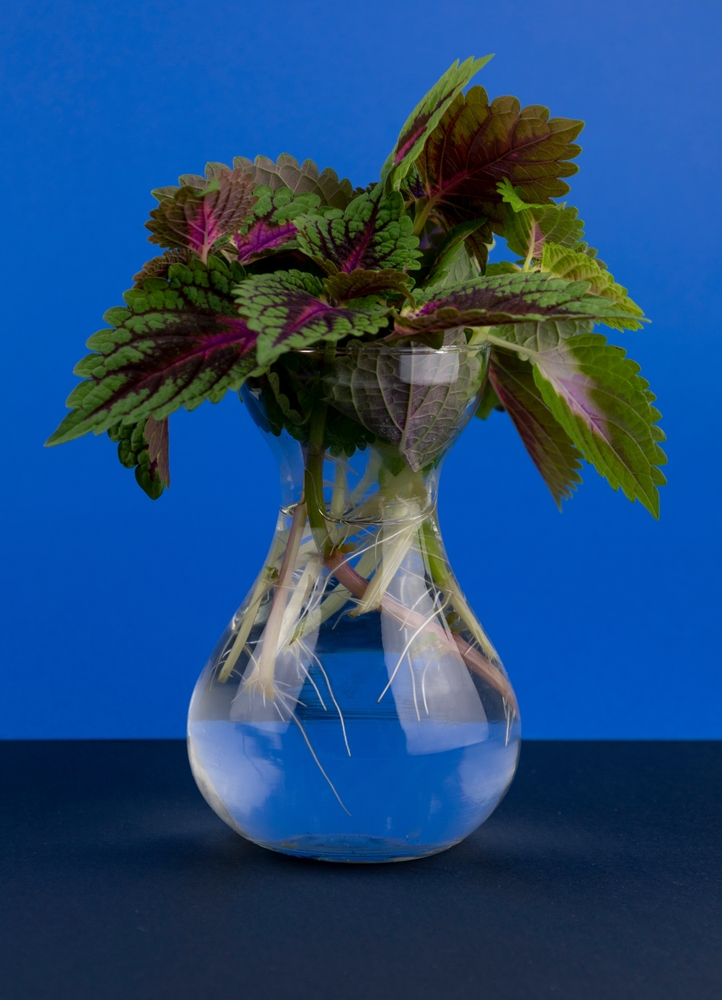
Coleus is a fantastic plant for water propagation, with its colorful foliage that comes in a variety of vibrant hues like purple, pink, red, and green. Propagating coleus is simple; just snip a healthy stem just below the leaf node, and place it in a vase of water. Within a couple of weeks, roots will form, and the plant will be ready for a new home in a water vase or a soil container.
What makes coleus a great option for water propagation is how quickly it roots and its vibrant, fast-growing nature. As it grows in the water vase, coleus becomes more lush, and its beautiful foliage will thrive. This low-maintenance plant thrives in bright indirect light and does best with regular water changes, making it a perfect addition to any plant lover’s collection.
African Violet (Saintpaulia)
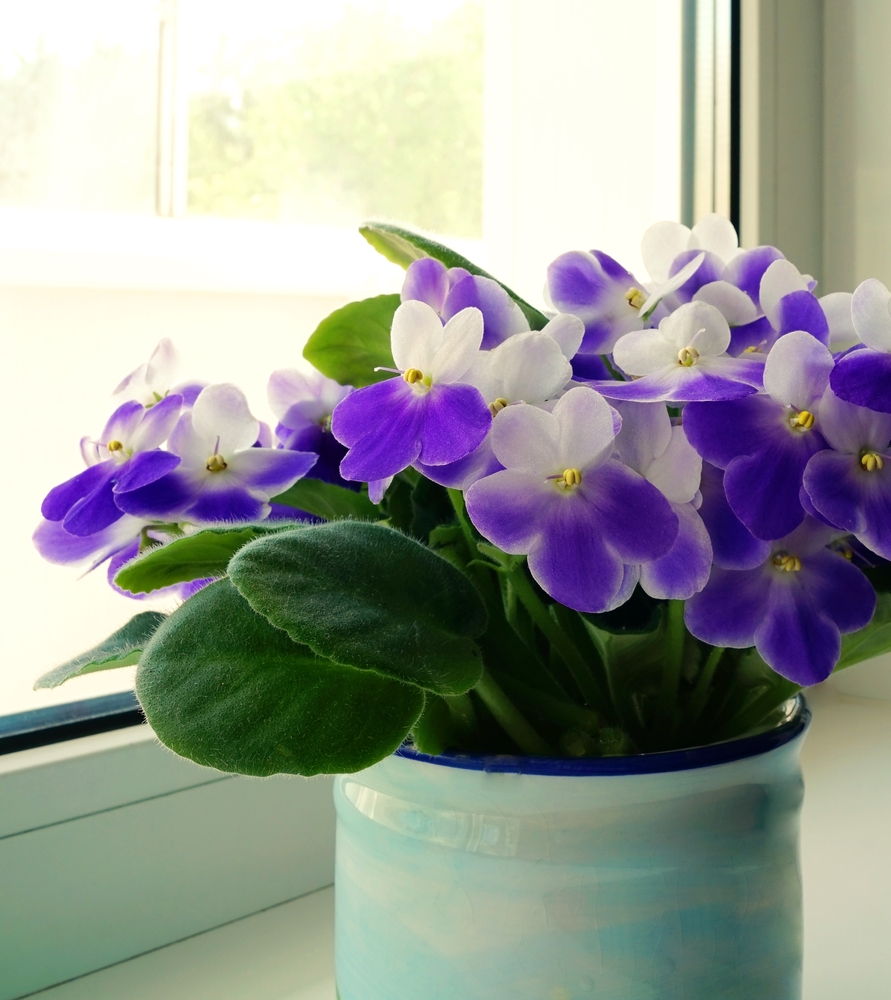
African violets are not only lovely plants, but they are also excellent candidates for water propagation. Simply snip a healthy leaf with a bit of the stem and place it in a vase of water. In a few weeks, roots will start to grow, and the leaf will eventually develop into a new plant. This propagation method is a fun way to grow multiple African violets, especially since they can be a bit tricky to start from seeds.
African violets are known for their beautiful, colorful flowers, which bloom in shades of purple, pink, and white. They thrive in indirect light and are perfectly suited to indoor environments. Regular water changes will keep them happy, and the delicate flowers will bloom year-round with proper care, creating a lovely display in any home.
Begonia (Begonia spp.)
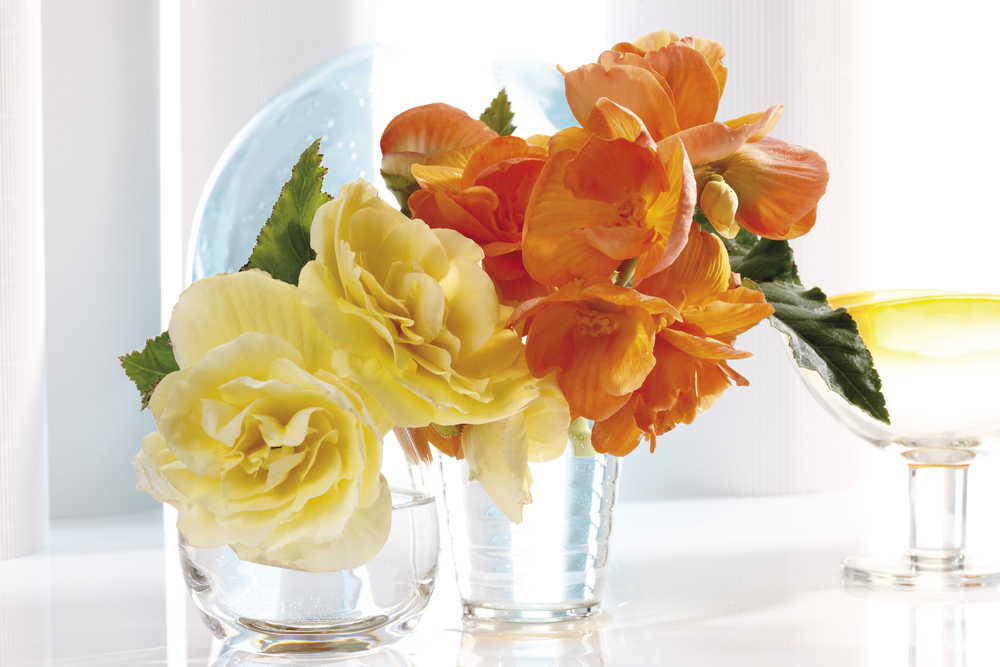
Begonias are another easy plant to propagate in water, especially due to their ability to grow from leaf or stem cuttings. Simply cut a healthy leaf or stem from the parent plant and place it in a vase of water, making sure the node is submerged. Begonias root fairly quickly and, in time, will grow new leaves or stems. Their striking foliage, which often has patterns or rich colors, makes them an attractive choice for water propagation.
Begonias are not only visually appealing but are also easy to care for in water. They thrive in indirect sunlight and prefer their water to be changed every few days. As the roots develop, the plant grows stronger, eventually giving you more begonias to enjoy or share with friends.
Chinese Evergreen (Aglaonema)
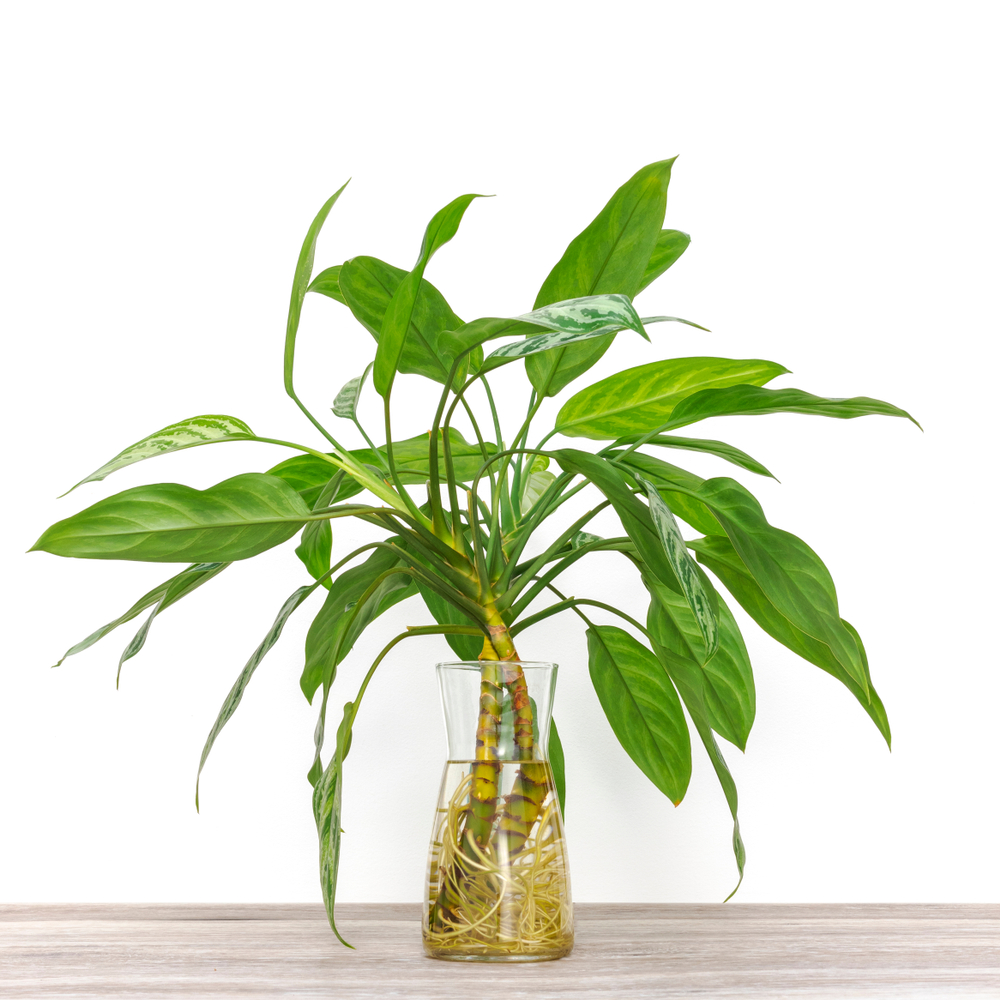
Chinese evergreens are a fantastic choice for water propagation, thanks to their resilience and ability to grow in various conditions. To propagate, cut a piece of the stem with a node and place it in a water vase. The plant will begin to root in just a few weeks. Once the roots are well-established, the plant can either remain in water or be moved to soil for continued growth.
These plants are known for their striking, variegated leaves in shades of green, silver, and cream, making them visually appealing as well as easy to grow. They tolerate low light and adapt well to indoor conditions, making them perfect for beginners or those looking for a low-maintenance option. Watering them regularly will help maintain their health and encourage faster root growth.
Tradescantia (Tradescantia spp.)
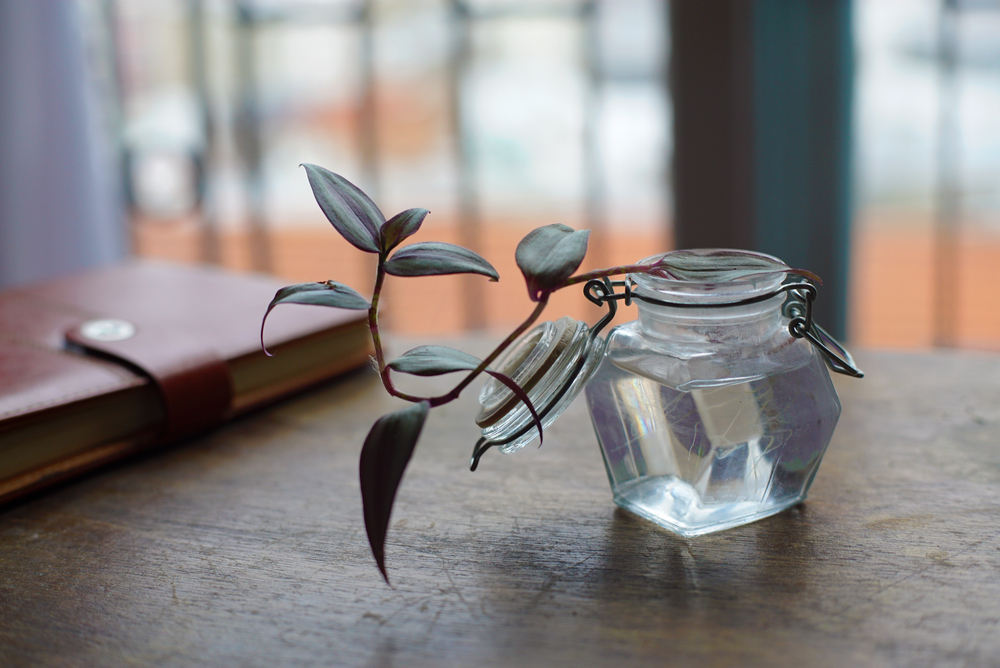
Tradescantia, also known as spiderwort or wandering Jew, is a stunning plant that can be easily propagated in water. Simply snip a piece of stem with at least one node and place it in a vase of water. Over time, roots will develop, and the plant will grow faster in water than in soil. Tradescantia’s vibrant, trailing vines with colorful foliage in shades of purple, pink, and green make it a favorite among plant enthusiasts.
The plant thrives in indirect light and benefits from regular water changes. It can grow long, lush vines in a matter of weeks, making it a fun plant to watch grow in water. Whether in a small jar or a large vase, Tradescantia adds a pop of color and energy to any room.
Lucky Bamboo (Dracaena sanderiana)
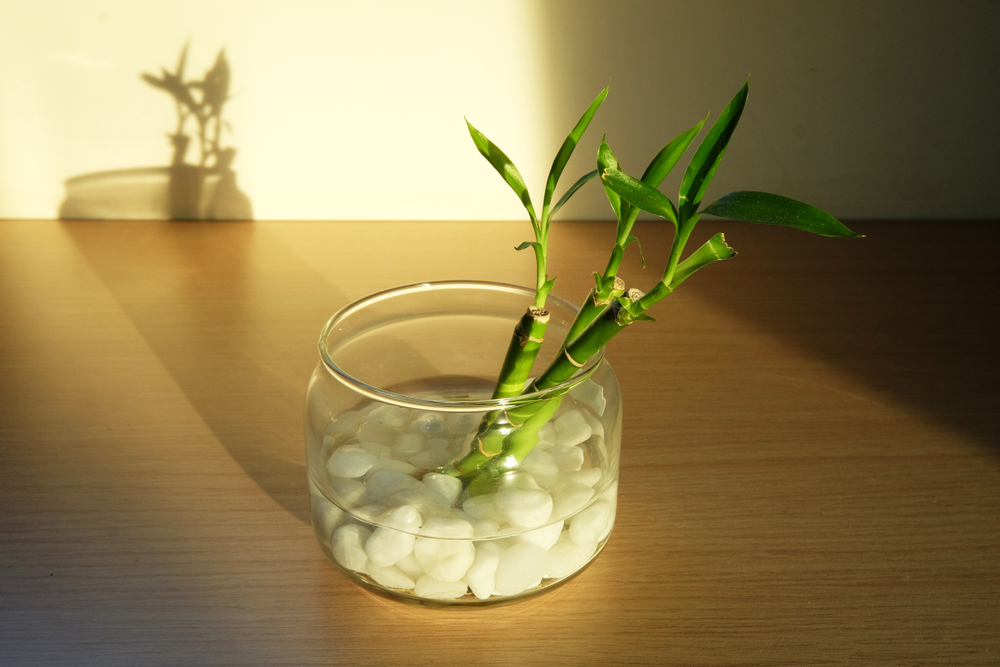
Lucky bamboo is an easy and rewarding plant to propagate in water. It doesn’t come from bamboo but from the Dracaena family, and it grows beautifully in water vases. Simply cut a section of the stalk, place it in a vase filled with water, and wait for roots to form. It’s believed to bring good luck, making it a great plant for both your home and your water vase.
Lucky bamboo prefers bright, indirect light, and it thrives with regular water changes. It’s a low-maintenance plant that does well in water without needing soil. The leaves of lucky bamboo grow upright, and its simple, graceful appearance fits any space.
Maranta (Maranta leuconeura)
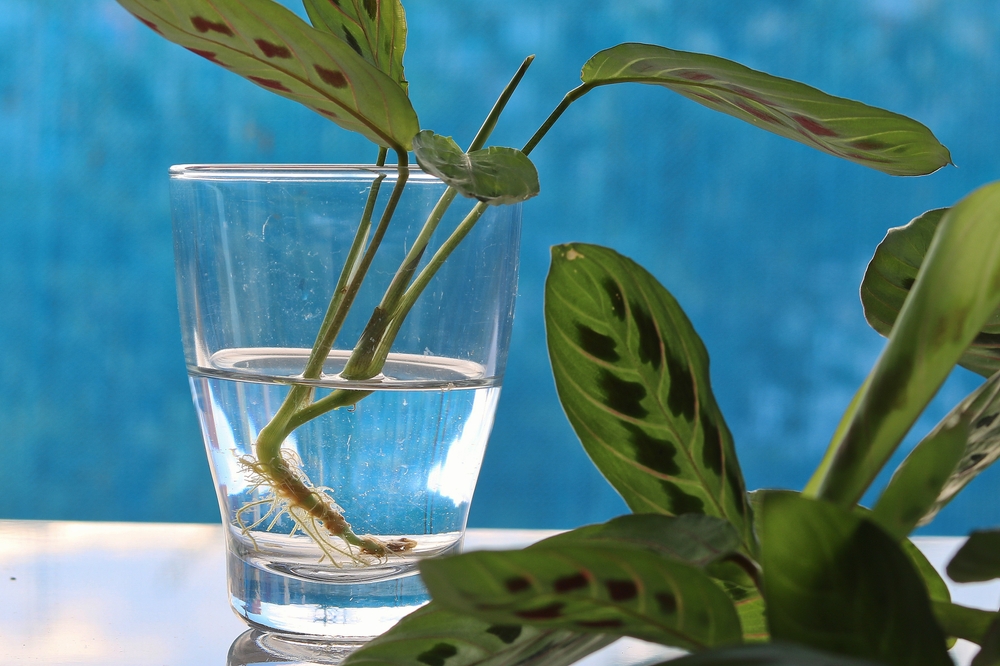
Marantas, or prayer plants, are known for their striking, patterned leaves that fold up at night, hence the name “prayer plant.” These plants can be propagated easily in water by cutting a healthy stem just below a node. Place the cutting in a water vase, and roots will soon begin to form. Maranta thrives in indirect light and humid environments, making water vases an ideal growing medium.
As the plant roots, you will see its unique foliage develop into more vibrant patterns. Maranta enjoys regular water changes to maintain the water’s clarity, ensuring healthy root growth. Once rooted, the plant can stay in the water vase or be moved to soil for continued growth.
This article originally appeared on Avocadu.
